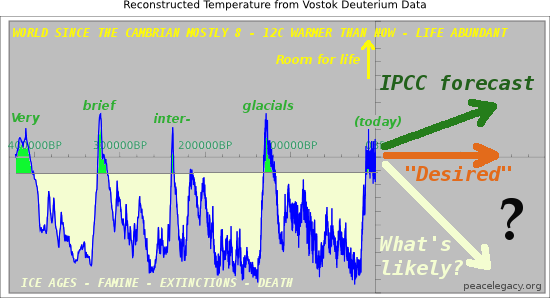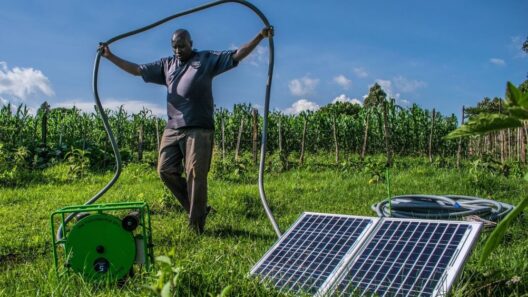Global warming and climate change are pressing challenges that require immediate action and innovative approaches. Among various strategies to combat this formidable issue, the Precautionary Principle emerges as a pivotal element in environmental policy and decision-making. This principle advocates for the protection of the environment and human health in situations of uncertainty, particularly when the potential risks may be severe or irreversible. But how does one effectively utilize this principle in the context of tackling global warming? And what challenges could arise? Let’s explore the intricacies of the Precautionary Principle while posing these critical questions.
The Precautionary Principle revolves around a fundamental tenet: when an action or policy has the potential to cause harm to the public or the environment, in the absence of scientific consensus, the burden of proof falls on those advocating for the action. Essentially, it suggests “better safe than sorry.” This becomes particularly salient in discussions on global warming, where the stakes are extraordinarily high.
At the heart of this principle is a commitment to prevention rather than reaction. Traditional risk management approaches often wait for clear scientific evidence demonstrating harm before taking action. However, given the complexities of climate science and the profound uncertainties surrounding potential feedback loops and tipping points, this conventional wisdom may lead to catastrophic consequences. Here, the Precautionary Principle compels policymakers and stakeholders to act proactively.
The application of the Precautionary Principle in the context of climate policy can indeed be multifaceted, involving a range of industries and practices. For example, consider fossil fuel extraction and consumption. The substantial emissions produced by these activities contribute significantly to global warming. Thus, policymakers face an intricate dilemma: to continue the reliance on fossil fuels for economic growth and energy security or to transition towards sustainable practices despite the uncertainties inherent in alternative technologies. Under the Precautionary Principle, the focus should lean towards the latter, prioritizing the advancement of renewable energy sources like solar, wind, and biofuels.
Nonetheless, transitioning to renewables also incurs uncertainties and challenges. A practical dilemma arises: while renewable technologies hold great potential, their effectiveness and viability in varied conditions remain to be rigorously tested. This brings us back to the playful question: How can we prioritize sustainable practices without falling into the trap of unintended consequences? The bewitching landscape of technological advancement requires constant scrutiny and evaluation.
Moreover, the scope of the Precautionary Principle extends beyond energy sources. It also encompasses agricultural practices, deforestation, and industrial pollution, all of which contribute to greenhouse gas emissions. Consider genetically modified organisms (GMOs) in agriculture, for instance. While GMOs may promise increased yields and drought resistance, their long-term ecological impacts are largely unknown. Adhering to the Precautionary Principle would advocate for thorough testing and regulation of GMO technologies, thereby ensuring environmental and health safety prior to widespread adoption.
Another critical element is the role of public engagement and community involvement in environmental decision-making. Effective application of the Precautionary Principle necessitates collaboration among various stakeholders, including governments, businesses, scientists, and civil society. Engaging communities ensures that diverse perspectives are considered, leading to more sustainable and equitable outcomes. It is incumbent upon policymakers to embrace transparency, enabling public discourse about the risks and uncertainties tied to climate change and mitigation strategies.
A significant challenge faced in implementing the Precautionary Principle is the institutional inertia often present in governance structures. Many governments operate with established protocols that may impede swift, proactive measures. This inertia can foster a culture of complacency, wherein short-term economic interests take precedence over long-term sustainability. Therefore, one must question: what systemic changes are necessary to embed the Precautionary Principle into the fabric of environmental governance effectively?
Furthermore, there’s a need for continuous monitoring and assessment of policies enacted under the Precautionary Principle. Establishing adaptive management frameworks that allow for dynamic responses to new information or changing conditions is crucial. This framework must be robust enough to evaluate both the successes and failures of various strategies. The ongoing gathering and analysis of data will ensure that responses remain proportionate and relevant as our understanding of climate science continues to evolve.
The implementation of the Precautionary Principle must also consider equity and justice. Vulnerable populations often bear the brunt of environmental degradation and climate impacts. Adopting precautionary measures should involve prioritizing these communities, ensuring that they are afforded protection and representation in decision-making. The intersectionality of climate justice with the Precautionary Principle invites contemplation: are we adequately confronting the unequal vulnerabilities that climate change exacerbates?
Lastly, global cooperation stands as a linchpin in successfully tackling global warming. Climate change knows no borders, and the collective responsibility to mitigate its effects necessitates collaboration across nations. The Precautionary Principle advocates for international agreements that reflect foresight, engaging in shared knowledge, resources, and technologies. The need for a unified approach becomes eminently clear in light of the growing frequency and intensity of climate-related disasters.
In conclusion, the Precautionary Principle serves as a critical guide for addressing global warming, offering a proactive approach that urges vigilance in the face of uncertainty. While challenges abound—from institutional inertia to the intricacies of technological implementation—embracing this principle can facilitate a more sustainable and just environmental future. The question remains not only about whether the world can adequately harness the power of precaution but also how we can ensure that collective action prevails over individual interests in the fight against the looming specter of climate change.








